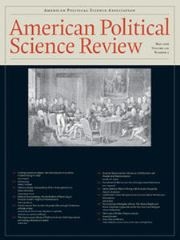Güneş Murat Tezcür. Forthcoming. “A Path out of Patriarchy? Political Agency and Social Identity of Women Fighters,” Perspectives on Politics 18(3): 722-739.
Violent movements in different parts of the world have employed large numbers of women fighters. This article addresses the question of how and why so many women from diverse background join an ethnic insurgency. Informed by an intersectional approach, the article suggests that when gender and ethnic inequalities overlap, an ethnic insurgency promising gender emancipation would have strong appeal among women. At the same time, the intersection of class and gender among women of an ethnic minority shapes their distinctive patterns of mobilization. In particular, uneducated women with lower class backgrounds join the movement because it provides them with the most viable way out of patriarchal relations. The article employs a multi-method research design to study a paradigmatic case of women in arms, the Kurdish insurgency. It utilizes an original large dataset containing information about more than 9,000 militants, an extensive fieldwork entailing dozens of in-depth interviews, and an archival study of sources in primary languages. The findings reveal (1) the effects of unequal relationships based on ethnicity, gender, and class on violent political mobilization and (2) the ambivalent relationship between women’s political agency and empowerment.
Güneş Murat Tezcür, 2016. "Ordinary People, Extraordinary Risks: Participation in an Ethnic Rebellion," American Political Science Review 110(2): 247-64.
Why do ordinary people take extraordinary risks and join an ethnic armed rebellion? This article tests a series of established hypotheses about selfish and identity based motivations and a new hypothesis based on prospect theory. It then employs a unique multi-method research strategy combining one of the most comprehensive datasets on insurgent recruitment that contains biographical information about 8,266 Kurdish militants with extensive fieldwork involving in-depth interviews with relatives of the militants to test these hypotheses. The findings show the decision to rebel is as much political as economic and social. While security concerns and expectations of benefits affect in the decision to rebel, social commitments, identities radicalized by state repression, and collective threat perceptions among efficacious individuals generated by political mobilization, rather than preexisting ethnic cleavages, also lead to participation in an ethnic insurgency. The latter findings explain the durability of insurgencies with limited economic resources and their ability to attract educated fighters.
Güneş Murat Tezcür and Clayton Besaw. 2020. “Jihadist Waves: Syria, the Islamic State, and the Changing Nature of Foreign Fighters,” Conflict Management and Peace Science 37(2): 133-151.
This article offers the first systematic analysis of cross-generational and cross-organizational aspects of jihadist foreign fighter (JFF) mobilization. How are individuals fighting in Syria different from foreign fighters who fought in the previous jihadist wars? What factors distinguish the Islamic State (IS) fighters from individuals joining other jihadist groups in Syria? The article builds an original sample of 477 JFFs from Turkey spanning three decades and employs the Random Forest technique, a method with several distinct advantages over regression analysis in the study of small N conflict data. The results have substantial and practical implications and show that fighters in Syria and IS fighters have different demographic characteristics and life experiences than fighters in pre-Syria wars and non-IS fighters in Syria, respectively. They inform more empirically grounded theory building about the recruitment motives and methods of JFFs.
Güneş Murat Tezcür and Sabri Ciftci. 2014. “Radical Turks: Why Turkish Citizens are Joining ISIS,” Foreign Affairs.
The past few weeks have seen a wave of Muslims from all around the world joining the ranks of the Islamic State of Iraq and al-Sham (ISIS). Although most of the attention has been on those coming from the United States and Europe, the bulk of foreign fighters has actually come from Algeria, Morocco, Saudi Arabia, Tunisia, and Turkey. While Turkish citizens have traveled to foreign lands and fought in the "war of others" since at least the early 1970s, the scope and pace of foreign fighter mobilization since the outbreak of the Syrian civil war has been unprecedented. These fighters primarily pursued two opposing ideological goals, risking their lives to take arms either for religious (i.e., ummah and caliphate) or nationalist (i.e., Kurdistan) political projects. Demographic analysis of hundreds of these fighters sheds some light on exactly who these individuals are, where they come from and how they differ from those who left Turkey to fight a generation ago. It also provides some insights about the motives of these individuals. As some of these individuals return home - at times with deadly consequences - understanding these motivations becomes increasingly important.




